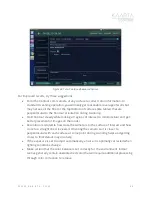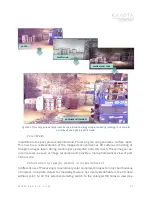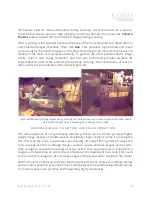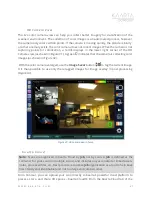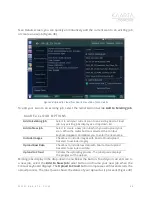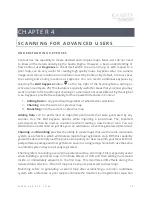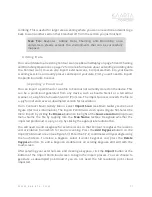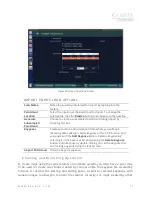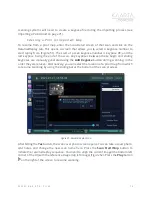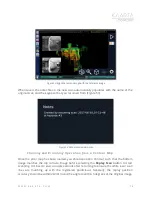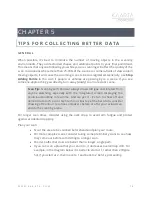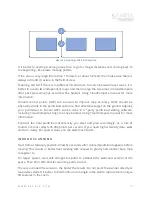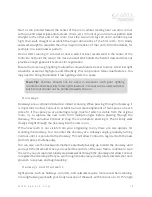
W W W . K A A R T A . C O M
7 8
Start a scan pointed toward the center of the room, while standing near a wall or corner
with some 3D objects (like pillars, desks, chairs, etc.) in front of you and a clear path to walk
straight to the other end of the room. Start the scan and stay still until confidence goes
high, then walk straight to establish the major dimensions of the first room. Turn slowly
and walk straight to establish the other major dimension of the room. Fill in the details, for
example, in a lawn mower pattern.
Do not start scanning in a corner or near a wall. For best results start in the center of the
room. Do not point the sensor too close to a wall which limits the field of view and does not
provide enough geometric features for registration.
Ensure there is enough lighting to allow the camera feature tracker to work. Avoid low light
situations, as well as high glare and reflectivity, that can produce false visual features. You
may need to bring illumination if low lighting exists in a space.
Scan Tip:
Contour should not be used in situations with poor lighting
conditions and especially in low light situations. Contour can be used outdoors
but Contour should not be pointed towards the sun.
D o o r w a y s
Doorways are a common obstacle in indoor scanning. When passing through a doorway, it
is important to allow Contour to establish an accurate alignment of two spaces on each
side of it. If the space you are entering is large, much of which is visible from the original
room, try to capture the new room from multiple angles before passing through the
doorway. This will allow Contour to map the room before entering it. Then simply walk
slowly straight through the doorway into the new room.
If the new room is not visible from your originating room, there are two options for
scanning the doorway. You can enter the doorway at a sideways angle, gradually turning
Contour until it is parallel to the doorway. This will allow Contour to register both the new
and old space simultaneously.
You can also use the backwards method, essentially backing up toward the doorway until
you reach the threshold. Once you reached the outside of the door frame, continue to scan
the room you just captured. Slowly step backwards through the doorway and allow Contour
to register the doorway. After you are through the doorway, slowly rotate towards the room
you wish to capture and begin walking.
H a l l w a y s a n d S t a i r w e l l s
Tight spaces, such as hallways, corridors, and catwalks require more care when scanning.
In a long hallway, walk with your body near one of the walls, with Contour at a 10-15° angle

